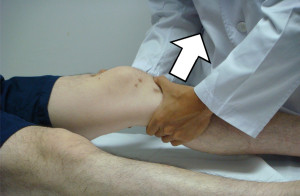If you are struggling with lower back pain that radiates down your leg, you might have hit the internet searching for answers, only to find the terms “sciatica” and “herniated disc” discussed frequently. This is because both conditions can cause debilitating back...
You open your eyes, stretch, and sit up, ready to start the day. But the moment your feet hit the floor, a sharp or aching pain shoots through your heels, arches, or the balls of your feet. Morning should feel refreshing, yet instead, you find yourself hobbling to the...
Are you a fitness enthusiast or a dedicated athlete who has suddenly been sidelined by a nagging, persistent pain in your calf and ankle? That sharp or aching sensation that flares up during or after activity could be the result of Achilles tendonitis. The Achilles...
Nonoperative Rehabilitation for ACL Injury

An ACL sprain or tear is one of the most common knee injuries that frequently occurs during activities such as soccer, football and basketball. Although surgery may be necessary in order to regain full function of your knee, this will depend on certain factors. In some cases, you may be able to recover from your ACL injury with nonoperative rehabilitation.
Learn more about the ACL injury and whether you can treat yours without surgery.
Anatomy
Your knee joint is formed by the meeting of three bones: your thighbone, your shinbone, and your kneecap. These bones are connected to other bones by four main ligaments in the knee that stabilize the joint. The two different types of ligaments are the collateral and the cruciate ligaments. The collateral ligaments are on the sides of the knee and control sideways motion; with the medial collateral ligament on the inside and the lateral collateral ligament on the outside. The cruciate ligaments are found on the inside of your knee and control back and forth motion. The anterior cruciate ligament (ACL) crosses over the posterior cruciate ligament to form an X.
The Injury
The most common causes of injury to the ACL include changing direction rapidly, landing from a jump, direct contact with an object or another person, stopping suddenly or slowing down while running. Some hear a popping noise when the injury occurs, or the feeling of your knee giving out beneath you. Other typical symptoms include pain, swelling, instability, loss of range of motion, tenderness and pain while walking.
If you’re dealing with any of these symptoms, it’s important to be seen by a doctor as soon as possible. Your doctor will talk to you about your symptoms and medical history, then perform a physical examination, where most ACL injuries can be diagnosed. Your doctor may also use imaging tests such as x-rays or an MRI scan to get a better look inside your knee.
Your doctor will determine what kind of ACL injury you’ve suffered, which are graded on a severity scale. A Grade 1 Sprain is when the ligament has been slightly stretched but can still help keep the knee joint stable. A Grade 2 Sprain is when the ligament is stretched so far that it becomes loose and may be partially torn. A Grade 3 Sprain is most commonly referred to as a complete tear of the ligament, when it has been split into two pieces.
Treatment
If your ACL is not completely torn, you will benefit from nonsurgical treatment. Bracing is a common treatment method that will protect your knee and provide stability. You mayalso use crutches to keep the weight off.
Physical therapy is also an effective treatment method. Your doctor will come up with a routine of stretches and exercises to restore the function to your knee and strengthen the surrounding muscles.
If the ligament is completely torn, surgery is necessary to repair it.
If you have an ACL injury, be sure to speak with your doctor as soon as possible to determine a treatment method that’s right for you.
For more information about how to treat injuries through non-operative methods, click here to download our eBook, The Patient’s Guide to Non-Operative Care and Rehabilitation.


